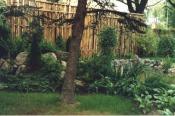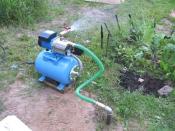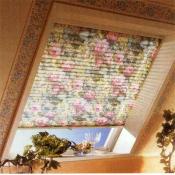Search
Login
Recommended
All about gas boilers, features of their installation and connection
The level of gasification in our country is approximately 75%. Gas heating remains the most popular for the private sector, where there is no central heating. We will tell you about all the nuances of installing a boiler in a private house.
Content
- Types of boilers, an overview video
- What does the boiler and heating system consist of
- Questions when choosing a boiler, about installing the boiler itself video
- We select power
- Gas connection
- Mains connection
- Ducts and chimneys
Types of boilers, an overview
Consider the main varieties of gas boilers, i.e. boilers that can operate on natural as well as liquefied gas, from a cylinder or gas tank. During operation, if necessary, almost any boiler can be configured to work from main gas, as well as from liquefied gas.
The task of the boiler itself is to transfer thermal energy from burning gas to heating.
There is a second function - certain types of boilers can heat water for domestic consumption of residents.
Single-circuit boiler it is connected directly to the heating system, and if hot water supply is required, a boiler can be additionally connected to a single-circuit boiler, or an individual gas water heater can be installed.
Double-circuit boiler It has two lines at the exit - one highway goes to heating, and the other goes to hot water supply.
The boiler heat exchanger is made of steel, copper or cast iron. The most popular heat exchangers are plate or bithermic.
The plate heat exchanger is able to transfer heat from the heating circuit to the hot water circuit (heat is transferred through the plates).
The bithermic heat exchanger works on the principle of pipe in pipe. Cast iron boilers have a heat exchanger assembled from separate sections (identical to a heating battery).
Some double-circuit boilers have built-in boilers.
According to the installation method, the boilers are divided into wall mounted and floorwhile the wall power is not higher than 100 kW, and the floor power is practically unlimited.
Structurally, depending on the draft, the boilers are divided into mechanisms with natural draft - such boilers have an open combustion chamber and an atmospheric burner.
More complex models have a closed combustion chamber - they are equipped with a pressurized burner or forced draft.
By the degree of energy use, all boilers are divided into convection and condensation.
A conventional boiler uses low heat of combustion, these are convection boilers, i.e. the heat carrier receives heat directly when burning fuel. The efficiency of such boilers does not exceed 90%.
The low efficiency is explained by the fact that the heat of the flue gases (and their temperature reaches 150 * C) is not captured, but flies into the pipe.
It is possible to complicate the design of the heat exchanger and increase the efficiency, but this is not always justified, because if the flue gases have a low temperature (53-57 * C), then the water vapor contained in the flue gas is converted into condensate.
This condensate is especially dangerous, since it is chemically aggressive moisture and in just a year this condensate can destroy the brickwork of the chimney.
Conclusion - flue gases should be hot enough, and chimneys are best made from acid-resistant materials.
The principle of operation of condensing boilers is different.
During the operation of these boilers, condensation is welcomed, as this generates additional heat. If this heat is collected, the efficiency of the boiler rises to 111%. 11% is obtained from heat generation during condensation.
Given the capture of heat, flue gases have a temperature of no higher than 80 * C, so you can put plastic chimneys - this simplifies the installation of chimneys.
The cooled condensate is drained into the sewer.
Condensing boilers have a great prospect in the markets of Russia, as blue fuel rises in price and consumers try to catch the heat as much as possible in order to save their wallet.
What does the boiler and heating system consist of
Every modern boiler has burner.
Most burners of modern gas boilers are modulating. Ignition and control of work occurs automatically.
Removable burners have standard sizes and, in principle, a burner of another brand can be selected for a boiler of one brand.
But, gas experts advise to assemble a boiler and a burner of one company, this tip allows you to facilitate maintenance.
The boiler includes security group - it consists of a pressure gauge, an automatic air vent and a safety valve, the valve allows you to relieve pressure at maximum pressure.
For an individual heating system in Russia, the maximum pressure is 3 bar.
If the pressure drops below normal, add water to the system.
If the water level drops constantly, there is a leak in the system.
In the coolant (in water or in antifreeze) there is always dissolved oxygen, with increasing temperature and lowering pressure, oxygen comes out in the form of bubbles.
Air vent serves to remove air from the system.
Special tap or valve, serves to replenish the system with liquid.
Circulation pump serves to move the fluid through the heating system. The use of a circulation pump allows the boiler to be installed anywhere in the heating system; temperature redistribution is much faster.
Expansion tank serves to compensate for the expansion of the liquid in the system when it is heated.
For a completely sealed heating system, closed tanks are used, they are installed either in the boiler body itself, or near the boiler.
If the system is open - open tanks are placed at the top of the hydraulic system - such tanks are used only in systems with natural circulation.
Hydraulic module- it includes elements of the safety group, thermometers, a circulation pump, various fittings. Such a module is placed on the wall, not far from the boiler - this simplifies installation and control of the boiler, although all elements can be installed separately.
Governing bodies- This is a unit with a device for adjusting the temperature, modern boilers have a complex control system.
Modern electronics allows you to maintain the boiler even inoperative, it protects the heating system from freezing in the event of a drop in coolant temperature below 5 * C.
Questions when choosing a boiler, about installing the boiler itself
The most basic question is gas supply to the house.
This problem is long solved, a lot of documentation is required.
But you solved this problem, the gas is brought to the house, they will connect it after installing all the equipment.
Initially, it is necessary to resolve the issue of the installation location of the boiler itself.
If the house is small - the boiler is installed in the room itself.
If the cottage is large - the boiler can be installed in the basement, in the attic or in a separate boiler room.
In this case, it is necessary to comply with all installation standards, they are registered: SNiP II 35-76 and SP-41-104-2000.
If the boiler is not installed correctly, it will not be allowed to operate.
IN private homes, the height of the room should be at least 2.5 meters, a minimum of three times air exchange should be provided within an hour.
If the boiler is with an open chamber, it is necessary to add to this figure the volume of air for gas combustion.
After choosing a place, you must install the boiler itself.
Installation is not complicated, you can handle it yourself.
But before commissioning, you will be required to submit documents for commissioning, service, etc.
Therefore, the boiler must be installed by a specialist from the gas service or a trading organization authorized to install.
Important! Whoever puts the boiler - you live in the house and you must remember about security.
We select power
The boiler itself is an important part of the heating system and if the location is determined and meets all installation standards, it is necessary to select the boiler capacity.
The boiler power can be calculated independently.
If the house is well insulated, then one kilowatt of power per 10 meters of square heated area is enough.
But there are different houses, differently insulated, climatic conditions are different.
For houses up to 200 m2, you can make an approximate calculation.
Does it make sense to save on calculating the heat loss at home - it's up to the owner.
Of course, specialists will quickly and competently select the power of the boiler for your home.
Gas connection
If the gas pipe is near the house - the most reliable way after introducing the gas pipe into the house is to connect using a metal pipe.
This method is popular for connecting stationary floor boilers.
If the boiler wall - it is connected using flexible rubber braided hoses. But remember that the service life of such a hose is no more than 5 years, then it must be replaced.
The best option is to connect using steel corrugated hosesince it does not deteriorate from time to time.
Connection error - failed installation in the connection.
To seal the gas pipe connection, a paronite gasket is used, since the rubber gasket can squeeze out and narrow the cross section for gas passage, as a result, the boiler will not be able to operate at full capacity.
Conclusion - all connections must be tightly screwed, but without unnecessary stress.
Mains connection
Regardless of who puts the boiler - the boiler must be properly grounded.
It is necessary to have a dielectric insert between the gas pipe and the boiler in order to prevent stray current from entering the neighbors.
Important! Do not ground on a gas pipe or heating pipe. The boiler is allowed to connect to electricity only through an automatic machine (automatic shutdown device) - the device should be next to the boiler. Do not pull the cable to the junction box without a circuit breaker. To protect the electronics, it is desirable to have a voltage stabilizer and separate circuit breakers.
Ducts and chimneys
For an open heating system, there is not enough ventilation system and one chimney.
For gas combustion, an influx of air from the outside into the room must be ensured.
For boilers with a closed chamber, it is necessary to supply air from the outside, separately from the chimney pipe or through a coaxial pipe: in such a pipe the products of combustion are discharged through the inner pipe, and air is supplied in the space between the inner and the outer.
This ensures the selection of a boiler with a closed chamber of lower power than with an open chamber.
Very often errors occur when installing chimneys.
The desire for savings is not always justified, it is necessary to select pipes that can work correctly in certain conditions.
Metal pipes must be resistant to burning and condensation.
Plastic pipes must be heat-resistant, in the joints must be reliably sealed.
On conventional boilers, horizontal pipes should have a slight slope towards the street.
On condensing boilers, the outlet pipe must have a bias towards the boiler - condensate must drain back.
Important! Narrowing the chimney is strictly prohibited. The maximum length of the coaxial pipe is 5 meters. The length of single pipes is not regulated.





